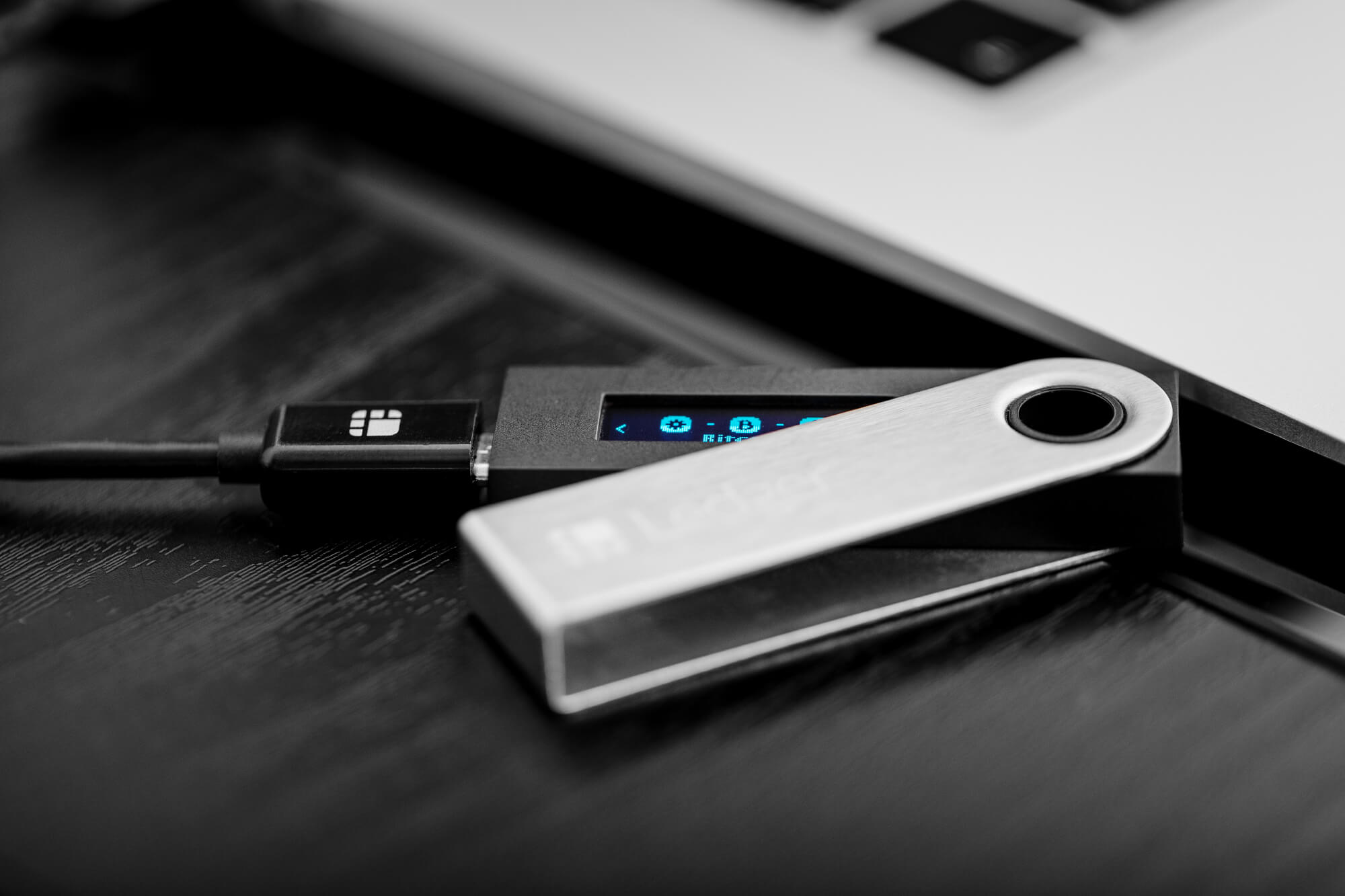Ledger Live, paired with a Ledger hardware wallet (Nano S Plus, Nano X, Flex, or Stax), is designed to provide a highly secure environment for managing your cryptocurrencies. Its security model combines offline storage with robust software features, making it one of the safest options for self-custody.

Below, I’ll explain how Ledger Live keeps your crypto secure as of February 21, 2025, breaking down its key mechanisms and practices.
Please download the last update of Ledger Live Application:
1. Ledger Live for Windows 10/11
2. Ledger Live for MAC
3. Ledger Live for Android
Core Security Principles of Ledger Live
- Offline Private Key Storage (Hardware Wallet Integration):
- How It Works: Your private keys—the cryptographic codes that control your crypto—are generated and stored on the Ledger hardware wallet’s Secure Element (SE) chip, a tamper-resistant component certified to CC EAL5+ standards (used in passports, credit cards). Ledger Live never accesses or stores these keys; it only communicates with the device to request transaction signatures.
- Security Benefit: Since private keys remain offline, they’re immune to online threats like hacking, phishing, or malware on your computer/mobile—even if your device is compromised.
- Physical Transaction Confirmation:
- How It Works: Every transaction (send, swap, stake) initiated in Ledger Live requires manual approval on the Ledger device. You review and confirm details (e.g., recipient address, amount) on the hardware’s screen, using buttons (Nano S/X) or touchscreen (Flex/Stax).
- Security Benefit: This prevents “blind signing” risks—malicious software can’t alter transactions unnoticed, as you verify them independently on the device.
- Non-Custodial Design:
- How It Works: Ledger Live doesn’t hold your funds or keys—your crypto stays on the blockchain, and you retain full control via your Ledger. No third-party servers store sensitive data.
- Security Benefit: Unlike custodial wallets (e.g., exchanges), there’s no central point of failure—your assets aren’t vulnerable to platform hacks or insolvency (e.g., FTX collapse).
- Secure Element Protection:
- How It Works: The SE chip resists physical attacks (e.g., side-channel analysis, fault injection) and includes a custom operating system (BOLOS) that isolates apps (e.g., Bitcoin, Ethereum) from each other.
- Security Benefit: Even if someone steals your Ledger, extracting keys is nearly impossible without your PIN, and three wrong PIN attempts wipe the device.
Ledger Live’s Software Security Features
- PIN Protection:
- How It Works: Your Ledger requires a 4–8 digit PIN (Nano S/X) or 6–12 (Flex/Stax) to unlock. Ledger Live prompts this each time you connect.
- Security Benefit: Locks out unauthorized access; a reset after failed attempts requires the recovery phrase, which only you should have.
- Recovery Phrase (Seed Phrase):
- How It Works: During setup, your Ledger generates a 24-word BIP-39 recovery phrase, displayed only on the device (not Ledger Live). You store it offline—Ledger Live never sees or saves it.
- Security Benefit: Acts as your ultimate backup—funds are recoverable on any BIP-39-compatible wallet if your Ledger is lost, but only you control access.
- Encrypted Communication:
- How It Works: Ledger Live uses encrypted channels (USB or Bluetooth for Nano X) to communicate with your Ledger, ensuring data (e.g., transaction requests) isn’t intercepted.
- Security Benefit: Protects against man-in-the-middle attacks—Bluetooth uses AES encryption with pairing codes verified on-device.
- Local Data Storage:
- How It Works: Account info (balances, transaction history) is stored locally on your computer/mobile, not cloud-synced, reducing exposure.
- Security Benefit: No centralized server breach can compromise your data—unlike cloud-based apps.
- Optional App Password:
- How It Works: In Settings > General, you can set a password to lock Ledger Live, requiring it on each launch.
- Security Benefit: Adds a layer of protection if someone accesses your device—though it doesn’t secure the Ledger itself.
- Genuine Check:
- How It Works: During setup, Ledger Live verifies your device’s authenticity with Ledger’s servers.
- Security Benefit: Ensures you’re not using a counterfeit device that could leak keys.
Advanced Security Features
- Passphrase (Hidden Wallets):
- How It Works: You can add a 25th word (passphrase) to your seed via Settings > Advanced > Passphrase on the Ledger, creating a separate “hidden” wallet.
- Security Benefit: Protects against physical coercion—your main wallet appears empty without the passphrase, thwarting “$5 wrench attacks.”
- Regular Updates:
- How It Works: Ledger Live and device firmware receive frequent updates (e.g., Ledger Live 2.81.0, Nano X firmware 2.2.1) to patch vulnerabilities.
- Security Benefit: Keeps the ecosystem resilient against new threats—e.g., fixes for USB protocol exploits or phishing vectors.
- Open-Source Components:
- How It Works: Parts of Ledger Live’s code are open-source (GitHub: LedgerHQ), audited by the community, though the Secure Element firmware (BOLOS) is proprietary.
- Security Benefit: Transparency allows scrutiny, reducing hidden backdoor risks, while the SE’s closed nature enhances physical security.
- Privacy Options:
- How It Works: Features like Coinjoin (for BTC anonymization) and Tor compatibility (in development) obscure transaction trails.
- Security Benefit: Enhances anonymity, reducing the chance of targeted attacks based on blockchain analysis.
How It Protects Against Common Threats
- Hacking: Keys stay offline—hackers can’t access them even if Ledger Live is compromised.
- Phishing: On-device verification prevents fake addresses; Ledger never asks for your recovery phrase.
- Malware: No clipboard hijacking possible—addresses are confirmed on the Ledger screen.
- Theft: PIN and optional passphrase lock out thieves; recovery phrase restores funds if lost.
Controversial Feature: Ledger Recover
- How It Works: An optional subscription service (introduced 2023) shards your recovery phrase, encrypting and distributing it to third-party custodians (e.g., Coincover) for backup. You can restore it with ID verification.
- Security Debate:
- Pro: Protects against losing your phrase—convenient for novices.
- Con: Critics argue it undermines self-custody, as third parties hold encrypted shards, raising trust and coercion risks.
- Mitigation: It’s opt-in—skip it to keep full control with your offline phrase.
Best Practices to Maximize Security
- Store Recovery Phrase Safely: Write it on paper or metal (e.g., Cryptosteel), keep it offline in a secure location—never digitally.
- Verify Downloads: Get Ledger Live only from ledger.com/ledger-live to avoid fakes.
- Update Regularly: Install new versions of Ledger Live and firmware (see “How to Update Ledger Live”).
- Check Addresses: Always confirm send/receive addresses on your Ledger’s screen.
- Avoid Public Devices: Use personal, trusted computers/mobiles to minimize malware risks.
Conclusion
Ledger Live keeps your crypto secure by leveraging the Ledger hardware wallet’s offline key storage, requiring physical transaction approvals, and avoiding custodial risks. Features like the Secure Element, PIN, and encrypted communication fortify it against attacks, while updates and optional tools (passphrase, privacy options) enhance flexibility. The Ledger Recover debate aside, sticking to self-custody best practices ensures maximum protection for your funds—over 5,500 assets supported, all safeguarded by this robust system.
